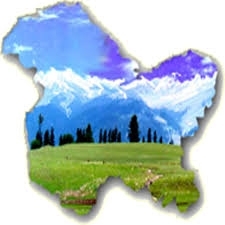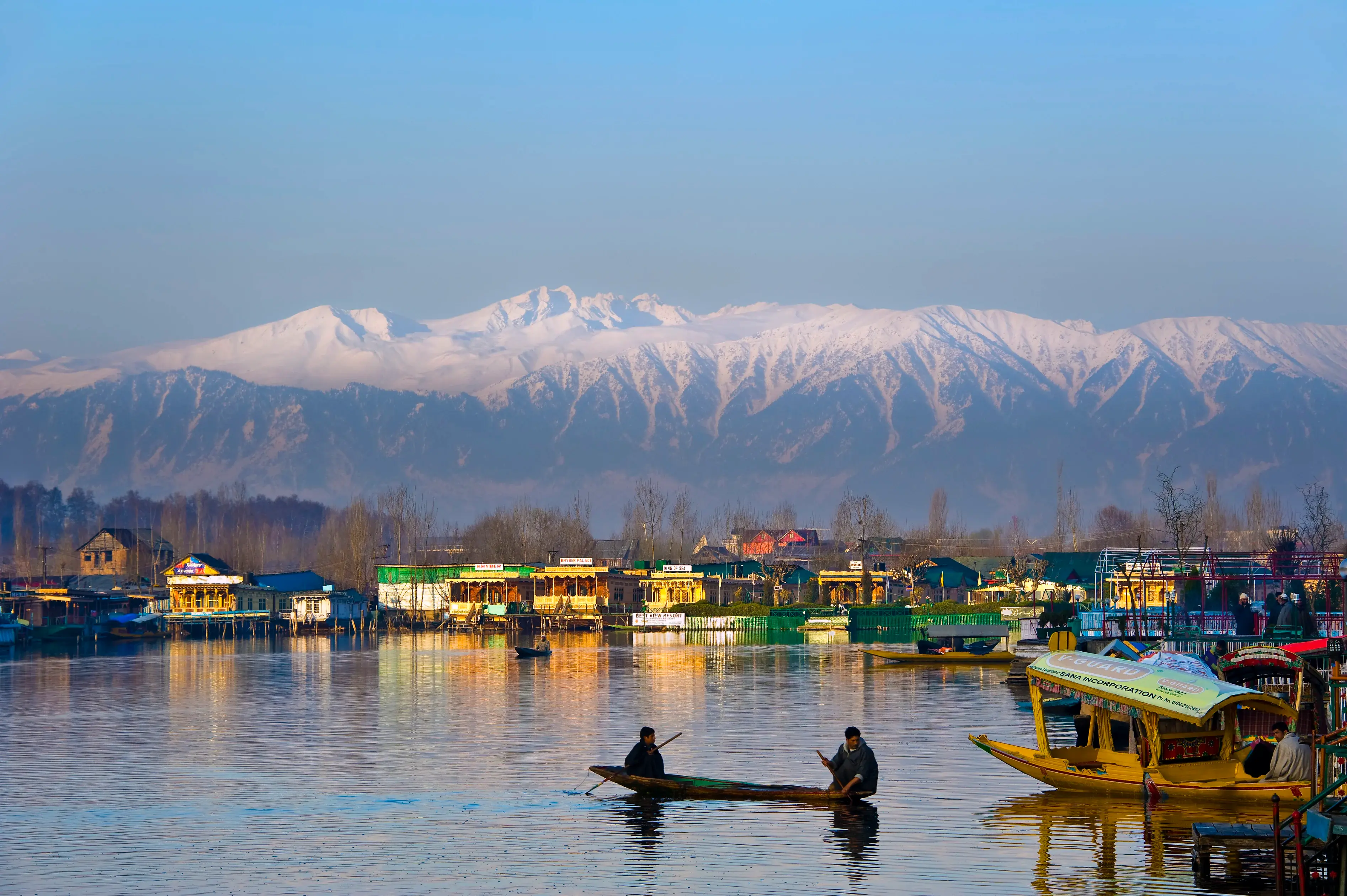Jammu & Kashmir
-
Public Group
-
4 Posts
-
4 Photos
-
0 Videos
-
Reviews
-
Bharat Aawaz
Recent Updates
-
آسام اور کشمیر
آسام اور کشمیر—ایک ایسا خطہ جو برف سے ڈھکے پہاڑوں، پرسکون وادیوں، اور ایک امیر ثقافتی ورثے کی تصویر کشی کرتا ہے۔ آئیے اس دلچسپ حصے کی تفصیلات میں غوطہ زن ہوں!
آسام اور کشمیر (جے اینڈ کے) ایک ایسا خطہ ہے جسے بھارت نے وفاقی علاقے کے طور پر منظم کیا ہے۔ یہاں اس کے بارے میں کچھ اہم نکات ہیں:
جغرافیہ اور سیاق و سباق:
جے اینڈ کے بھارت کے شمالی ترین حصے میں واقع ہے اور اس کی سرحدیں پاکستان اور چین سے ملتی ہیں۔
کنٹرول لائن (ایل او سی) اسے پاکستان کے زیر انتظام آزاد کشمیر اور گلگت بلتستان کے علاقوں سے جدا کرتی ہے۔
جنوب کی جانب، یہ بھارتی ریاستوں ہماچل پردیش اور پنجاب کے ساتھ سرحد رکھتا ہے، جبکہ مغرب میں لداخ (جو بھارت کے زیر انتظام ایک وفاقی علاقہ بھی ہے) واقع ہے۔
وفاقی علاقے کے طور پر قیام:
جے اینڈ کے کے وفاقی علاقے کے قیام کا واقعہ ایک اہم موڑ تھا۔ یہ جموں اور کشمیر کی تنظیم نو ایکٹ، 2019 کے تحت عمل میں آیا، جسے بھارتی پارلیمنٹ کے دونوں ایوانوں نے اگست 2019 میں منظور کیا۔
نتیجتاً، سابق ریاست جموں اور کشمیر کو دو وفاقی علاقوں میں دوبارہ تشکیل دیا گیا: جموں اور کشمیر (جس پر ہم گفتگو کر رہے ہیں) اور لداخ۔ یہ تبدیلی 31 اکتوبر 2019 کو نافذ ہوئی۔
اصطلاحات:
"جموں اور کشمیر" کا نام ان دو مختلف علاقوں کی عکاسی کرتا ہے:
جموں خطہ: اپنے مندروں، تاریخی قلعوں، اور دلکش مناظر کے لیے مشہور۔
کشمیر وادی: اپنی شاندار خوبصورتی، ہاؤس بوٹس، اور ڈل جھیل کے لیے معروف۔
اصطلاحات کچھ پیچیدہ ہو سکتی ہیں، کیونکہ جاری تنازعہ ہے:
بھارت اس خطے کو "بھارتی زیر انتظام کشمیر" کے طور پر سمجھتا ہے۔
پاکستان اس علاقے کو "بھارتی مقبوضہ کشمیر" (آئی او کے) یا "بھارتی زیر کنٹرول کشمیر" (آئی ایچ کے) کہتا ہے۔
غیر جانبدار ذرائع عموماً "بھارتی زیر انتظام کشمیر" اور "پاکستانی زیر انتظام کشمیر" جیسے اصطلاحات استعمال کرتے ہیں۔
زبانیں اور ثقافت:
سرکاری زبانوں میں کشمیر، ڈوگری، اردو، ہندی، اور انگریزی شامل ہیں۔
مزید برآں، مختلف دیگر زبانیں بھی اس خطے میں بولی جاتی ہیں، جو اس کی متنوع ثقافت کی عکاسی کرتی ہیں۔
تاریخی پس منظر:
جے اینڈ کے کی ایک پیچیدہ تاریخ ہے، جس میں بھارت کی آزادی سے پہلے اس کی ریاستی حیثیت شامل ہے۔
بھارتی آئین کی دفعہ 370 نے جے اینڈ کے کو خصوصی خودمختاری فراہم کی تھی، جسے 2019 میں منسوخ کر دیا گیا۔
چاہے آپ گلمرگ کے برف پوش چوٹیوں، پامپور کے زعفرانی کھیتوں، یا ویشنو دیوی کے روحانی ماحول سے متاثر ہوں، آسام اور کشمیر ایک جادوئی اور دلچسپ سرزمین ہے۔آسام اور کشمیر آسام اور کشمیر—ایک ایسا خطہ جو برف سے ڈھکے پہاڑوں، پرسکون وادیوں، اور ایک امیر ثقافتی ورثے کی تصویر کشی کرتا ہے۔ آئیے اس دلچسپ حصے کی تفصیلات میں غوطہ زن ہوں! آسام اور کشمیر (جے اینڈ کے) ایک ایسا خطہ ہے جسے بھارت نے وفاقی علاقے کے طور پر منظم کیا ہے۔ یہاں اس کے بارے میں کچھ اہم نکات ہیں: جغرافیہ اور سیاق و سباق: جے اینڈ کے بھارت کے شمالی ترین حصے میں واقع ہے اور اس کی سرحدیں پاکستان اور چین سے ملتی ہیں۔ کنٹرول لائن (ایل او سی) اسے پاکستان کے زیر انتظام آزاد کشمیر اور گلگت بلتستان کے علاقوں سے جدا کرتی ہے۔ جنوب کی جانب، یہ بھارتی ریاستوں ہماچل پردیش اور پنجاب کے ساتھ سرحد رکھتا ہے، جبکہ مغرب میں لداخ (جو بھارت کے زیر انتظام ایک وفاقی علاقہ بھی ہے) واقع ہے۔ وفاقی علاقے کے طور پر قیام: جے اینڈ کے کے وفاقی علاقے کے قیام کا واقعہ ایک اہم موڑ تھا۔ یہ جموں اور کشمیر کی تنظیم نو ایکٹ، 2019 کے تحت عمل میں آیا، جسے بھارتی پارلیمنٹ کے دونوں ایوانوں نے اگست 2019 میں منظور کیا۔ نتیجتاً، سابق ریاست جموں اور کشمیر کو دو وفاقی علاقوں میں دوبارہ تشکیل دیا گیا: جموں اور کشمیر (جس پر ہم گفتگو کر رہے ہیں) اور لداخ۔ یہ تبدیلی 31 اکتوبر 2019 کو نافذ ہوئی۔ اصطلاحات: "جموں اور کشمیر" کا نام ان دو مختلف علاقوں کی عکاسی کرتا ہے: جموں خطہ: اپنے مندروں، تاریخی قلعوں، اور دلکش مناظر کے لیے مشہور۔ کشمیر وادی: اپنی شاندار خوبصورتی، ہاؤس بوٹس، اور ڈل جھیل کے لیے معروف۔ اصطلاحات کچھ پیچیدہ ہو سکتی ہیں، کیونکہ جاری تنازعہ ہے: بھارت اس خطے کو "بھارتی زیر انتظام کشمیر" کے طور پر سمجھتا ہے۔ پاکستان اس علاقے کو "بھارتی مقبوضہ کشمیر" (آئی او کے) یا "بھارتی زیر کنٹرول کشمیر" (آئی ایچ کے) کہتا ہے۔ غیر جانبدار ذرائع عموماً "بھارتی زیر انتظام کشمیر" اور "پاکستانی زیر انتظام کشمیر" جیسے اصطلاحات استعمال کرتے ہیں۔ زبانیں اور ثقافت: سرکاری زبانوں میں کشمیر، ڈوگری، اردو، ہندی، اور انگریزی شامل ہیں۔ مزید برآں، مختلف دیگر زبانیں بھی اس خطے میں بولی جاتی ہیں، جو اس کی متنوع ثقافت کی عکاسی کرتی ہیں۔ تاریخی پس منظر: جے اینڈ کے کی ایک پیچیدہ تاریخ ہے، جس میں بھارت کی آزادی سے پہلے اس کی ریاستی حیثیت شامل ہے۔ بھارتی آئین کی دفعہ 370 نے جے اینڈ کے کو خصوصی خودمختاری فراہم کی تھی، جسے 2019 میں منسوخ کر دیا گیا۔ چاہے آپ گلمرگ کے برف پوش چوٹیوں، پامپور کے زعفرانی کھیتوں، یا ویشنو دیوی کے روحانی ماحول سے متاثر ہوں، آسام اور کشمیر ایک جادوئی اور دلچسپ سرزمین ہے۔0 Comments 0 Shares 439 Views 0 ReviewsPlease log in to like, share and comment! -
Ah, Jammu and Kashmir—a region that conjures up images of snow-capped mountains, serene valleys, and a rich cultural tapestry. Let's dive into this fascinating part of India!
**Jammu and Kashmir (J&K)** is a region administered by India as a **union territory**. Here are some key points about it:
1. **Geography and Context**:
- J&K lies in the northernmost part of India and shares borders with Pakistan and China.
- The **Line of Control (LoC)** separates it from the Pakistani-administered territories of Azad Kashmir and Gilgit-Baltistan in the west and north.
- To the south, it borders the Indian states of Himachal Pradesh and Punjab, while to the west lies Ladakh (also administered by India as a union territory).
2. **Formation as a Union Territory**:
- The formation of the union territory of Jammu and Kashmir was a significant event. It happened through the **Jammu and Kashmir Reorganisation Act, 2019**, which was passed by both houses of the Indian Parliament in August 2019.
- As a result, the former state of Jammu and Kashmir was reconstituted into two union territories: Jammu and Kashmir (the one we're discussing) and Ladakh. This change took effect on **October 31, 2019**.
3. **Terminology**:
- The name "Jammu and Kashmir" reflects the two distinct regions it encompasses:
- **Jammu region**: Known for its temples, historic forts, and picturesque landscapes.
- **Kashmir Valley**: Famous for its stunning beauty, houseboats, and the Dal Lake.
- The terminology can be a bit tricky due to the ongoing dispute:
- India considers the region under its control as "Indian-administered Kashmir."
- Pakistan refers to the territory under Indian control as "Indian-occupied Kashmir" (IOK) or "Indian-held Kashmir" (IHK).
- Neutral sources often use terms like "Indian-administered Kashmir" and "Pakistan-administered Kashmir" to demarcate the areas¹.
4. **Languages and Culture**:
- The official languages include **Kashmiri, Dogri, Urdu, Hindi, and English**.
- Additionally, various other languages are spoken across the region, reflecting its diverse heritage.
5. **Historical Context**:
- J&K has a complex history, including its princely state status before India's independence.
- Article 370 of the Indian Constitution granted special autonomy to J&K until its abrogation in 2019.
So, whether you're captivated by the snow-clad peaks of Gulmarg, the saffron fields of Pampore, or the spiritual vibes of Vaishno Devi, Jammu and Kashmir is a land of enchantment and intrigue.
Ah, Jammu and Kashmir—a region that conjures up images of snow-capped mountains, serene valleys, and a rich cultural tapestry. Let's dive into this fascinating part of India! 🏔️ **Jammu and Kashmir (J&K)** is a region administered by India as a **union territory**. Here are some key points about it: 1. **Geography and Context**: - J&K lies in the northernmost part of India and shares borders with Pakistan and China. - The **Line of Control (LoC)** separates it from the Pakistani-administered territories of Azad Kashmir and Gilgit-Baltistan in the west and north. - To the south, it borders the Indian states of Himachal Pradesh and Punjab, while to the west lies Ladakh (also administered by India as a union territory). 2. **Formation as a Union Territory**: - The formation of the union territory of Jammu and Kashmir was a significant event. It happened through the **Jammu and Kashmir Reorganisation Act, 2019**, which was passed by both houses of the Indian Parliament in August 2019. - As a result, the former state of Jammu and Kashmir was reconstituted into two union territories: Jammu and Kashmir (the one we're discussing) and Ladakh. This change took effect on **October 31, 2019**. 3. **Terminology**: - The name "Jammu and Kashmir" reflects the two distinct regions it encompasses: - **Jammu region**: Known for its temples, historic forts, and picturesque landscapes. - **Kashmir Valley**: Famous for its stunning beauty, houseboats, and the Dal Lake. - The terminology can be a bit tricky due to the ongoing dispute: - India considers the region under its control as "Indian-administered Kashmir." - Pakistan refers to the territory under Indian control as "Indian-occupied Kashmir" (IOK) or "Indian-held Kashmir" (IHK). - Neutral sources often use terms like "Indian-administered Kashmir" and "Pakistan-administered Kashmir" to demarcate the areas¹. 4. **Languages and Culture**: - The official languages include **Kashmiri, Dogri, Urdu, Hindi, and English**. - Additionally, various other languages are spoken across the region, reflecting its diverse heritage. 5. **Historical Context**: - J&K has a complex history, including its princely state status before India's independence. - Article 370 of the Indian Constitution granted special autonomy to J&K until its abrogation in 2019. So, whether you're captivated by the snow-clad peaks of Gulmarg, the saffron fields of Pampore, or the spiritual vibes of Vaishno Devi, Jammu and Kashmir is a land of enchantment and intrigue. 🌄✨0 Comments 0 Shares 527 Views 0 Reviews
More Stories
Join the group to join the chatbox

BMA | Bharat Media Association
https://bma.bharatmediaassociation.com







